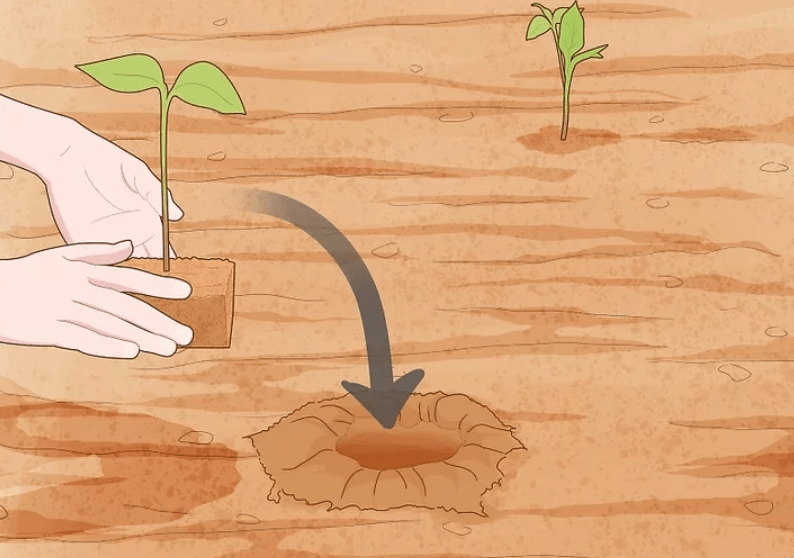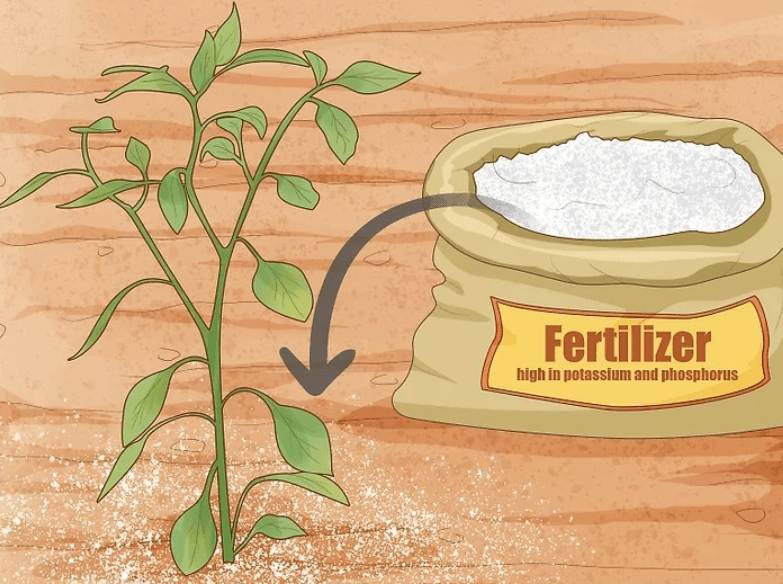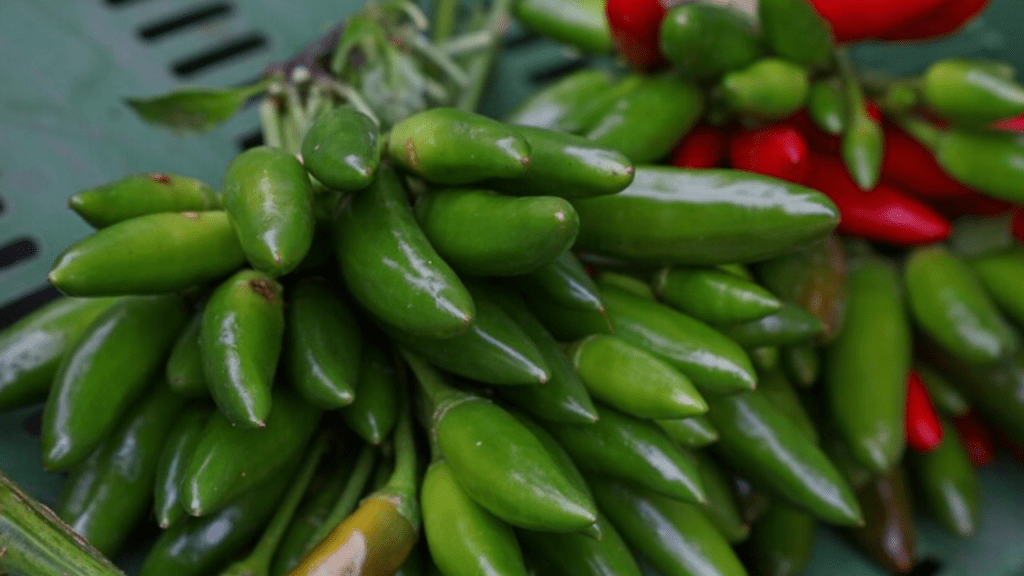
Jalapeno Plant Seeds: The Ultimate Guide to Planting and Growing
If you’ve ever wanted to grow your own jalapeno plants, you’ve come to the right place. In this ultimate guide, we’ll cover everything you need to know about planting and growing jalapeno plant seeds. Whether you’re a seasoned gardener or a beginner, this article will provide you with the knowledge and tips to successfully grow your own spicy peppers. From choosing the right soil to troubleshooting common issues, we’ve got you covered. So let’s get started and turn your garden into a jalapeno paradise!
Jalapenos are a popular and versatile ingredient in many cuisines, known for their spicy kick and distinctive flavor. Whether you enjoy them in salsas, stuffed with cheese, or pickled, jalapenos are a staple in many kitchens. If you’re interested in growing your own jalapenos, it’s important to start with quality seeds. When selecting seeds, look for ones that are fresh and have a high germination rate. Planting them in well-draining soil and providing them with plenty of sunlight and water is essential for their growth. As the plants start to grow, be sure to support them with stakes or cages to prevent them from bending or breaking. It’s also important to keep an eye out for any pests or diseases that may affect the plants and address them promptly. With proper care and attention, you can enjoy a bountiful harvest of fresh, homegrown jalapenos. So why not give it a try and add a spicy twist to your gardening experience?
Table of Contents
ToggleUnderstanding Jalapeno Plant Seeds
If you’re interested in growing your own jalapenos, it’s important to start with quality seeds. When selecting seeds, look for ones that are fresh and have a high germination rate. Planting them in well-draining soil and providing them with plenty of sunlight and water is essential for their growth. As the plants start to grow, be sure to support them with stakes or cages to prevent them from bending or breaking. It’s also important to keep an eye out for any pests or diseases that may affect the plants and address them promptly. With proper care and attention, you can enjoy a bountiful harvest of fresh, homegrown jalapenos. So why not give it a try and add a spicy twist to your gardening experience?
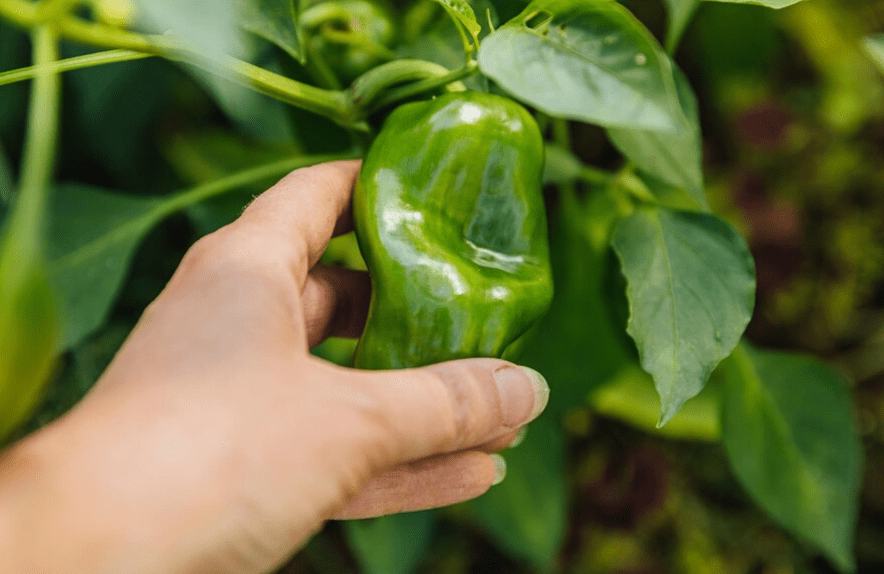
What are jalapeno plant seeds?
Jalapeno plant seeds are the small, dry seeds found inside a jalapeno pepper. These seeds are used for growing new jalapeno plants. When selecting jalapeno seeds for planting, it’s important to choose ones that are fresh and have a high germination rate. This will increase the chances of successful plant growth. Jalapeno seeds can be planted in well-draining soil and require plenty of sunlight and water for optimal growth. As the plants grow, it’s important to provide support with stakes or cages to prevent them from bending or breaking. Keeping an eye out for pests and diseases is also essential for the health of the plants. By providing proper care and attention, you can enjoy a bountiful harvest of fresh, homegrown jalapenos. So why not give it a try and add a spicy twist to your gardening experience?
Different varieties of jalapeno seeds.
There are many different varieties of jalapeno seeds available for planting. Some popular options include the traditional mild jalapeno, the fiery hot jalapeno, and even the unique giant jalapeno. When selecting jalapeno seeds for planting, it’s important to choose ones that are fresh and have a high germination rate. This will increase the chances of successful plant growth. Jalapeno seeds can be planted in well-draining soil and require plenty of sunlight and water for optimal growth. As the plants grow, it’s important to provide support with stakes or cages to prevent them from bending or breaking. Keeping an eye out for pests and diseases is also essential for the health of the plants. By providing proper care and attention, you can enjoy a bountiful harvest of fresh, homegrown jalapenos. So why not give it a try and add a spicy twist to your gardening experience?
Importance of selecting high-quality seeds.
When it comes to selecting seeds for planting, it’s crucial to choose high-quality seeds. High-quality seeds have a higher germination rate, which means that they are more likely to grow into healthy, strong plants. When selecting seeds, look for ones that are fresh and have been properly stored to ensure their viability. It’s also important to consider factors such as the variety of the plant and the specific growing conditions needed for optimal growth. By choosing high-quality seeds, you can increase the likelihood of a successful and productive harvest. So, take the time to research and select the best seeds for your garden and set yourself up for a successful growing season.
Preparing for Planting
Choosing the right location for your jalapeno plants.
When it comes to growing jalapenos, choosing the right location is crucial for their success. Jalapeno plants require plenty of sunlight, so it’s important to select a location that receives at least 6-8 hours of sunlight per day. Additionally, make sure the location has well-draining soil to prevent waterlogged roots. You can also consider using raised beds or containers if your soil isn’t suitable for jalapeno plants. It’s also important to consider the spacing between plants to ensure they have enough room to grow. Proper air circulation is essential to prevent diseases and promote healthy plant growth. Lastly, consider the climate and temperature in your area to ensure it’s suitable for growing jalapenos. By selecting the right location and considering these factors, you can set yourself up for a successful jalapeno harvest.
Ideal soil conditions and preparation.
The ideal soil conditions and preparation are crucial for successfully growing jalapenos. First and foremost, jalapeno plants require plenty of sunlight, so it’s important to choose a location that receives at least 6-8 hours of sunlight per day. In addition to sunlight, well-draining soil is essential to prevent waterlogged roots, so it’s important to ensure the soil has good drainage. If the soil in your area isn’t suitable for growing jalapenos, you can consider using raised beds or containers to provide the right growing environment. Proper spacing between plants is also important to provide adequate room for growth and to promote good air circulation, which is essential for preventing diseases and ensuring healthy plant growth. Lastly, consider the climate and temperature in your area to ensure it’s suitable for growing jalapenos. By taking these factors into consideration and preparing the soil accordingly, you can maximize the success of your jalapeno crop.
Importance of sunlight and temperature requirements.
Sunlight and temperature are crucial factors to consider when growing jalapenos. These plants thrive in warm, sunny conditions and require at least 6-8 hours of sunlight per day to grow and produce healthy fruits. It’s important to choose a location for planting that receives adequate sunlight to ensure the plants can photosynthesize and grow properly.
In addition, jalapeno plants have specific temperature requirements. They prefer warm temperatures between 70-90 degrees Fahrenheit for optimal growth. If planted in cooler temperatures, the plants may not thrive or produce as many fruits. It’s important to consider the climate and temperature in your area before planting jalapenos to ensure they will have the right conditions for growth.
By taking these factors into consideration and providing the right amount of sunlight and appropriate temperature, you can set yourself up for a successful jalapeno harvest. Proper planning and preparation will help ensure that your jalapeno plants have the best chance of thriving and producing a bountiful harvest.
How to Plant Jalapeno Seeds
Step-by-step guide on planting jalapeno seeds.
Planting jalapeno seeds is a simple process, but it requires attention to detail to ensure the best results. First, start by selecting a well-draining pot or planting area. Fill the container with a high-quality potting mix and moisten the soil before planting. Next, plant the jalapeno seeds about 1/4 inch deep and water the soil thoroughly. It’s important to keep the soil consistently moist, but not waterlogged, to promote germination. Place the container in a warm, sunny location and cover it with plastic wrap to create a greenhouse effect, which helps keep the seeds warm and moist. Once the seeds have sprouted, remove the plastic wrap and continue to water the plants regularly. As the seedlings grow, transplant them into larger pots or into the garden, spacing them about 18 inches apart. Be sure to provide support for the plants, as jalapeno peppers can become heavy when they start to produce fruit. With proper care and attention, you can enjoy a bountiful harvest of jalapenos from your own garden.
Seed germination process.
The seed germination process is a simple yet crucial step in growing plants from seeds. To start, fill a container with a high-quality potting mix and moisten the soil before planting. Next, plant the seeds about 1/4 inch deep and water the soil thoroughly. It’s important to keep the soil consistently moist, but not waterlogged, to promote germination. Place the container in a warm, sunny location and cover it with plastic wrap to create a greenhouse effect, which helps keep the seeds warm and moist. Once the seeds have sprouted, remove the plastic wrap and continue to water the plants regularly. As the seedlings grow, transplant them into larger pots or into the garden, spacing them about 18 inches apart. Be sure to provide support for the plants, as some plants can become heavy when they start to produce fruit. With proper care and attention, you can enjoy a bountiful harvest of fresh vegetables or beautiful flowers from your own garden.
How to plant seeds indoors (starting seeds).
Starting seeds indoors can be a great way to get a head start on your garden. To start, fill a container with a high-quality potting mix and moisten the soil before planting. Next, plant the seeds about 1/4 inch deep and water the soil thoroughly. It’s important to keep the soil consistently moist, but not waterlogged, to promote germination. Place the container in a warm, sunny location and cover it with plastic wrap to create a greenhouse effect, which helps keep the seeds warm and moist. Once the seeds have sprouted, remove the plastic wrap and continue to water the plants regularly. As the seedlings grow, transplant them into larger pots or into the garden, spacing them about 18 inches apart. Be sure to provide support for the plants, as some plants can become heavy when they start to produce fruit. With proper care and attention, you can enjoy a bountiful harvest of fresh vegetables or beautiful flowers from your own garden.
Caring for Jalapeno Plants
Watering: How much and how often.
When it comes to watering jalapeno plants, it’s important to find the right balance. You want to keep the soil consistently moist, but not waterlogged. It’s best to water deeply and less frequently, rather than shallowly and more often. This allows the roots to grow deeper and become more resilient. In the beginning, right after planting the seeds, water the soil thoroughly to promote germination. Once the seeds have sprouted, continue to water the plants regularly, but be mindful of the moisture level in the soil. It’s important to water the plants in the morning to allow the foliage to dry during the day, which can help prevent diseases from spreading. Keep an eye on the weather and adjust your watering schedule accordingly – hot and dry conditions may require more frequent watering, while cooler and wet conditions may require less. Overall, consistent and proper watering is essential for the health and growth of your jalapeno plants, and with the right care, you can look forward to a great harvest of spicy peppers.
Fertilization: Types of fertilizer and application schedules.
When it comes to fertilizing your plants, it’s important to choose the right type of fertilizer and follow a proper application schedule. There are different types of fertilizers, such as organic and synthetic options, each with their own advantages and disadvantages. Organic fertilizers, like compost or manure, can improve soil structure and promote beneficial microorganisms, while synthetic fertilizers can provide a more immediate nutrient boost. It’s important to consider the specific needs of your plants and the composition of your soil when choosing a fertilizer. As for the application schedule, it’s best to fertilize your plants at the beginning of the growing season to give them a good start, and then continue to fertilize throughout the season according to the specific needs of your plants. It’s important to follow the instructions on the fertilizer package and not to over-fertilize, as this can lead to nutrient imbalances or even damage your plants. By choosing the right type of fertilizer and following a proper application schedule, you can ensure that your plants receive the nutrients they need to thrive and produce a bountiful harvest.
Mulching and weeding.
Mulching is an important part of caring for your jalapeno plants. It helps to conserve moisture, suppress weeds, and regulate soil temperature. You can use organic materials such as straw, grass clippings, or wood chips as mulch around your plants. Applying a layer of mulch around your plants can help to keep the soil moist and prevent weed growth, which can compete with your jalapeno plants for nutrients and water. It’s important to regularly check and remove any weeds that do manage to sprout up, as they can hinder the growth of your plants. By mulching and weeding regularly, you can help your jalapeno plants to thrive and produce a healthy harvest of spicy peppers.
Pruning and supporting plants.
Pruning and supporting plants are essential tasks in maintaining the health and growth of your plants. Pruning involves removing dead or overgrown branches and leaves to encourage new growth and improve the overall appearance of the plant. This can also help to prevent disease and improve air circulation within the plant. Supporting plants, such as tomatoes or peppers, is important to prevent them from bending or breaking under the weight of their fruit. Using stakes, cages, or trellises can help to support the plants and ensure that they grow upright and produce a healthy yield. By regularly pruning and providing support for your plants, you can help them to thrive and produce a bountiful harvest.
Common Problems and Solutions
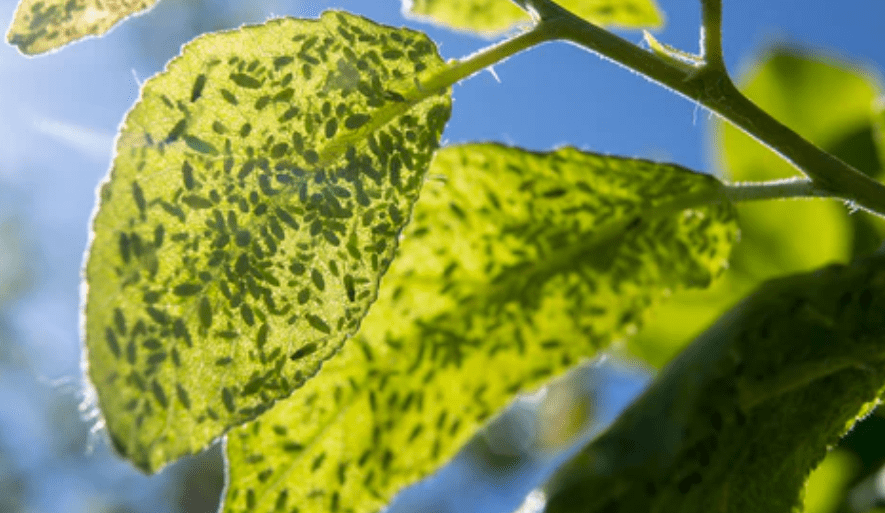
Pests that affect jalapeno plants and how to deal with them.
Jalapeno plants can be affected by various pests, such as aphids, spider mites, and hornworms. These pests can damage the plants and reduce the yield of jalapeno peppers. To deal with these pests, you can use natural or organic insecticides or insecticidal soap to control their population. You can also introduce beneficial insects, such as ladybugs or lacewings, which can help to keep pest populations in check. Additionally, regularly inspecting your plants for signs of pests and promptly removing any affected leaves or branches can help to prevent the spread of infestations.
Another common problem for jalapeno plants is blossom end rot, which is caused by a calcium deficiency in the soil. To prevent this, you can add calcium-rich amendments to the soil, such as gypsum or crushed eggshells. Ensuring that the plants are receiving adequate water and nutrients can also help to prevent blossom end rot.
It’s important to regularly check and remove any weeds that do manage to sprout up, as they can hinder the growth of your plants. By mulching and weeding regularly, you can help your jalapeno plants to thrive and produce a healthy harvest of spicy peppers.
Pruning and supporting plants are essential tasks in maintaining the health and growth of your plants. Pruning involves removing dead or overgrown branches and leaves to encourage new growth and improve the overall appearance of the plant. This can also help to prevent disease and improve air circulation within the plant. Supporting plants, such as tomatoes or peppers, is important to prevent them from bending or breaking under the weight of their fruit. Using stakes, cages, or trellises can help to support the plants and ensure that they grow upright and produce a healthy yield. By regularly pruning and providing support for your plants, you can help them to thrive and produce a bountiful harvest.
Diseases common to jalapeno plants and prevention methods.
There are several common diseases that can affect jalapeno plants, such as bacterial leaf spot, powdery mildew, and Phytophthora blight. To prevent these diseases, it’s important to regularly check and remove any weeds that may hinder the growth of your plants, as they can harbor diseases and pests. Additionally, mulching and weeding regularly can help your jalapeno plants to thrive and produce a healthy harvest of spicy peppers. Pruning and supporting plants are also essential tasks in maintaining the health and growth of your plants. Pruning involves removing dead or overgrown branches and leaves to encourage new growth and improve the overall appearance of the plant, which can also help to prevent disease and improve air circulation within the plant. Supporting plants, such as tomatoes or peppers, is important to prevent them from bending or breaking under the weight of their fruit. Using stakes, cages, or trellises can help to support the plants and ensure that they grow upright and produce a healthy yield. By regularly pruning and providing support for your plants, you can help them to thrive and produce a bountiful harvest while preventing common diseases.
Harvesting Jalapenos
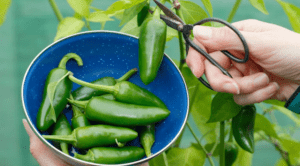
When and how to harvest jalapenos.
Harvesting jalapenos is an important step in the process of growing these spicy peppers. You should wait to harvest your jalapenos until they are a vibrant green color and have reached a size of about 2-3 inches in length. It’s also important to note that jalapenos will become spicier the longer they are left on the plant, so if you prefer a milder flavor, you may want to harvest them earlier.
To harvest your jalapenos, simply use a pair of scissors or garden shears to cut the peppers from the plant, making sure to leave a small portion of the stem attached. This will help to prolong the shelf life of the peppers. It’s best to harvest jalapenos in the morning when the temperatures are cooler, as this can help to preserve the flavor and texture of the peppers.
Once you have harvested your jalapenos, you can store them in the refrigerator for up to two weeks or in the freezer for longer-term storage. If you have an abundance of jalapenos, you can also pickle or preserve them to enjoy their spicy flavor throughout the year. Just be sure to handle jalapenos carefully and wash your hands thoroughly after handling them to avoid irritation from the spicy oils. With these tips, you can successfully harvest and enjoy your homegrown jalapenos.
Signs that jalapenos are ready to pick.
When it comes to harvesting jalapenos, there are a few signs to look out for to determine if they are ready to be picked. First, the jalapenos will start to turn from green to a deep, vibrant red color as they ripen. The size of the jalapeno will also increase as it matures. Additionally, the pepper will feel firm and have a glossy sheen when it is ready to be picked. It’s also important to note that jalapenos will become spicier the longer they are left on the plant, so if you prefer a milder flavor, you may want to harvest them earlier.
To harvest your jalapenos, simply use a pair of scissors or garden shears to cut the peppers from the plant, making sure to leave a small portion of the stem attached. This will help to prolong the shelf life of the peppers. It’s best to harvest jalapenos in the morning when the temperatures are cooler, as this can help to preserve the flavor and texture of the peppers.
Once you have harvested your jalapenos, you can store them in the refrigerator for up to two weeks or in the freezer for longer-term storage. If you have an abundance of jalapenos, you can also pickle or preserve them to enjoy their spicy flavor throughout the year. Just be sure to handle jalapenos carefully and wash your hands thoroughly after handling them to avoid irritation from the spicy oils. With these tips, you can successfully harvest and enjoy your homegrown jalapenos.
Uses and Benefits of Jalapenos
Jalapenos are not only delicious, but they also have many uses and benefits. They can be used in a variety of dishes to add a spicy kick, such as salsas, marinades, and even poppers. Jalapenos are also high in vitamins A and C, as well as capsaicin, which has been linked to several health benefits, including pain relief and metabolism boosting. They can also help to clear congestion and act as a natural decongestant. Some people even use jalapenos as a natural insect repellent. Overall, jalapenos are a versatile and beneficial ingredient to have in your kitchen.
In conclusion, growing jalapeno plant seeds can be a rewarding and enjoyable experience. By following the tips and techniques outlined in this guide, you can ensure that your plants thrive and produce a bountiful harvest of spicy peppers. Whether you’re a seasoned gardener or just starting out, this ultimate guide will provide you with all the information you need to successfully grow jalapeno plants from seeds. Happy gardening!
Frequently asked questions And Answer
The best time to plant jalapeno seeds is in the early spring, after the last frost has passed.
Jalapeno seeds should be planted about 1/4 inch deep in a well-draining soil.
Jalapeno plants should be watered regularly, about 1-2 inches per week, depending on the weather and soil moisture.
Jalapeno seeds typically take about 7-10 days to germinate, but it can vary based on the temperature and soil conditions
Jalapeno plants thrive in full sunlight, so it’s best to plant them in a location where they will receive at least 6-8 hours of direct sunlight per day.
Jalapenos can be harvested once they reach a size of 3-6 inches and have turned a bright green color. They can also be left to ripen further and turn red if desired.
Jalapeno plants are relatively easy to grow, as long as they are given the right conditions of sunlight, water, and well-draining soil.
Yes, jalapeno plants can be grown indoors as long as they receive enough sunlight, either from a sunny window or using grow lights. Just make sure to provide proper ventilation for the plants.

